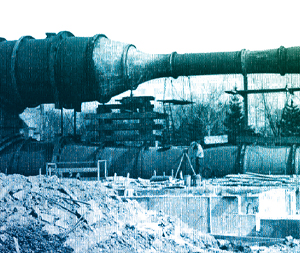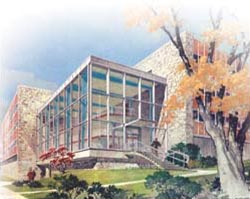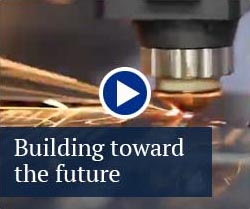

THROUGH THE YEARS
The vibrancy and impact for which the college is known today threads back through history, not only to the decision by the Board of Trustees in 1896 to organize The Pennsylvania State College into seven distinct schools, one of which was the School of Engineering, but also to countless other decisions, moments, achievements, and individuals that collectively form the fabric of engineering at Penn State in 2021.
1896
The Board of Trustees makes it official
On Jan. 3, engineering joins six other newly formed schools within The Pennsylvania State College.
1900
We Are No. 10
Demand grows steadily in the early years of the School of Engineering. By the turn of the century, Penn State ranks 10th in the nation for the number of undergraduate engineering students enrolled.
1909
Engineering experiment station broadens the school’s focus
Dean John Price Jackson pushes the need to use theoretical knowledge gained in the classroom and laboratory to solve the practical problems of industry.
1918
School responds to world at war
Penn State and hundreds of other colleges and universities provide technical training for enlisted military personnel via six- and eight-week courses. During the course of the war the school gives instruction to 2,500 troops.
1929
The school benefits Pennsylvanians
By the end of the 1920s, the school’s Department of Engineering Extension had given instruction on virtually every engineering topic to more than 30,000 Pennsylvania residents.
1945
The birth of Ordnance Research Laboratory (ORL)
The Navy transfers development and testing of underwater weaponry from Harvard to the school. ORL eventually becomes the Applied Research Laboratory at Penn State.
1955
Engineering powers up
Designed by William M. Breazeale, the reactor on the eastern edge of the Penn State campus reaches criticality, the point at which a self-sustaining reaction occurs.
1957
Designing a new home on College Avenue
Howell Lewis Shay and Associates of Philadelphia design the $5.9 million Hammond Building, a stone and metal panel structure of about 600 feet in length, which is dedicated in 1960.
1968
Projecting engineering demand
The American Society for Engineering Education urges educators and the profession “to make every effort to attract an increasing number of students to engineering at both the undergraduate and graduate level.”
1976
The helping heart
A team of researchers in the Colleges of Engineering and Medicine introduce the Penn State Heart-Assist Pump, the first device of its kind.
1980
Among the largest
With more than 7,000 undergraduates, the college has one of the largest enrollments in the nation.
1989
Working to expand the engineering community
The new Women in Engineering Program, along with the Minority Engineering Program from a few years earlier, adopt outreach strategies to attract more women and underrepresented students into engineering.
1996
An engineering landmark
The American Society of Mechanical Engineers recognizes the Garfield Thomas Water Tunnel, which began operating in 1950, as a national historic mechanical engineering landmark. Today, the tunnel is part of the Penn State Applied Research Laboratory and serves as the principal experimental hydrodynamic research facility for the U.S. Navy.
2012
The Learning Factory recognized
The National Academy of Engineering recognizes the Bernard M. Gordon Learning Factory, established in 1995, as one of 29 programs “infusing real-world experiences into engineering education.”
2018
A master plan for the future
Penn State engages with the firm Payette to develop a framework for College of Engineering capital projects over 10 years. The master plan promises to reshape the college and its footprint on campus.
2020
Breaking new ground
Construction begins on the first of two new planned buildings on West Campus, the start of the college’s facilities master plan implementation.

Rendering of Hammond Building, Kunkle Lounge, and Sackett Building.
The College of Engineering at Penn State: A Century in the Land-Grant Tradition, written by Michael Bezilla and published by the Penn State University Press in 1996, served as an invaluable guide to the history of the college prior to and throughout its first century. Special thanks also to the Eberly Family Special Collections Library and Penn State University Libraries.



